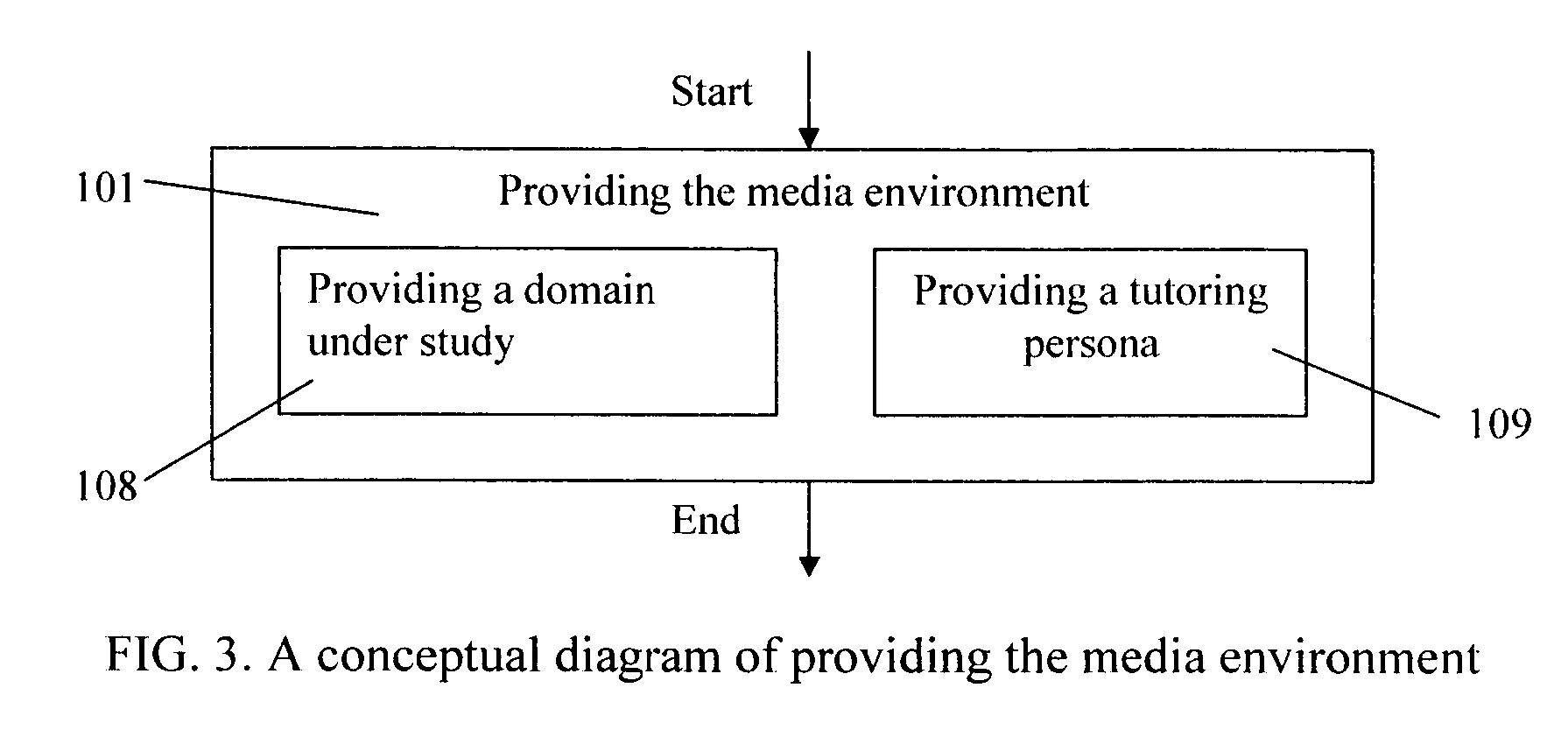Unified generator of intelligent tutoring
a tutoring and intelligent technology, applied in the field of instruction technology for education and training, to achieve the effect of accelerating successful leaning
- Summary
- Abstract
- Description
- Claims
- Application Information
AI Technical Summary
Benefits of technology
Problems solved by technology
Method used
Image
Examples
embodiments
[0397] The specific embodiment of the logic-media converter 142 is dependable of specific embodiment of the media environment 143. Examples can include but are not limited to the following instances.
[0398] If the media environment 143 is embodied as a paper textbook (just for explanation), then the controller 164 can be realized as a device (a page-turner) for opening 131 a right page presenting the target situation (s) or comment (c) and providing controls (like fill in the blank, a multiple choice menu and a pencil) for the learner. Generated learning events {e} (a filled in text, checked up alternatives of the menu) can be traceable, for example, by an optical recognition device. So, the monitor 165 can be realized as a text recognition device for recognizing a learner entered text on the page, storing samples of recognized text, comparing recognized textual response against pre-stored samples, identifying which pre-stored response is closest to the pre-stored samples and report...
PUM
 Login to View More
Login to View More Abstract
Description
Claims
Application Information
 Login to View More
Login to View More - R&D
- Intellectual Property
- Life Sciences
- Materials
- Tech Scout
- Unparalleled Data Quality
- Higher Quality Content
- 60% Fewer Hallucinations
Browse by: Latest US Patents, China's latest patents, Technical Efficacy Thesaurus, Application Domain, Technology Topic, Popular Technical Reports.
© 2025 PatSnap. All rights reserved.Legal|Privacy policy|Modern Slavery Act Transparency Statement|Sitemap|About US| Contact US: help@patsnap.com



